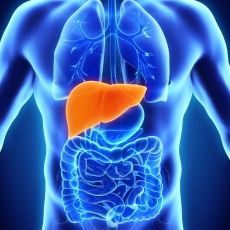
Copper Storage Disease

Summary
Wilson disease is a rare inherited disorder that prevents your body from getting rid of extra copper. You need a small amount of copper from food to stay healthy. Too much copper is poisonous.
Normally, your liver releases extra copper into bile, a digestive fluid. With Wilson disease, the copper builds up in your liver, and it releases the copper directly into your bloodstream. This can cause damage to your brain, kidneys, and eyes.
Wilson disease is present at birth, but symptoms usually start between ages 5 and 35. It first attacks the liver, the central nervous system or both. The most characteristic sign is a rusty brown ring around the cornea of the eye. A physical exam and laboratory tests can diagnose it.
Treatment is with drugs to remove the extra copper from your body. You need to take medicine and follow a low-copper diet for the rest of your life. Don’t eat shellfish or liver, as these foods may contain high levels of copper. At the beginning of treatment, you’ll also need to avoid chocolate, mushrooms, and nuts. Have your drinking water checked for copper content and don’t take multivitamins that contain copper.
With early detection and proper treatment, you can enjoy good health.
NIH: National Institute of Diabetes and Digestive and Kidney Diseases
Source: MedlinePlus, National Library of Medicine.
Information pulled from the Wilson Disease page.
MedlinePlus brings together authoritative health information from the National Library of Medicine (NLM), the National Institutes of Health (NIH), and other government agencies and health-related organizations.
Wilson Disease
National Institute of Neurological Disorders and Stroke
Wilson Disease
National Institute of Diabetes and Digestive and Kidney Diseases
Wilson Disease: Frequently Asked Questions
Wilson Disease Association
Wilson's Disease
Mayo Foundation for Medical Education and Research
Ceruloplasmin Test
National Library of Medicine
How Is Wilson Disease Diagnosed?
Wilson Disease Association
Kayser-Fleischer Rings
Wilson Disease Association
Listen to our
latest Podcast!


